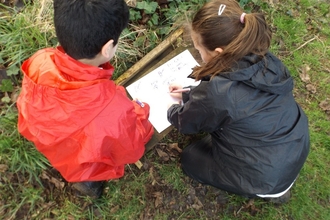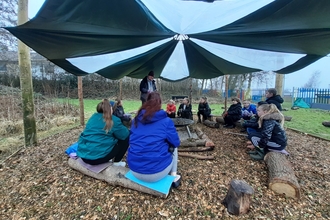Pencil case? Check!
Book bag? Check!
Wellies and waterproofs? Check!
It is nearly the end of the summer term, and as we head towards the October half term holiday Nature Friendly Schools is excited to make this academic year one that immerses pupils in all the wonder and beauty of nature, right on their doorstep.

Westminster Primary
We were busy over the summer holidays, greening school grounds or finalising plans for the big build when schools return. In a 2010 survey by Learning Through Landscapes, 82% of teachers said their school is not making as much use as it can of their outdoor spaces. Nature Friendly Schools seeks to address this by reimagining the grounds available in each school, creating unique spaces for teaching and learning surrounded by nature. These areas, codesigned by the project, pupils, and teachers, get children outdoors to learn, develop motor skills, improve behaviour, and refine their social skills. We revitalise overgrown ponds with accessible viewing platforms for pond dipping and species identification, create sensory trails to spark interest and instil calm and peacefulness as well as sorting the practicalities – installing storage for kit and equipment as well as sheltered spaces for full-class, all weather teaching.
This year, here at Nature Friendly Schools we’ll continue our work with 97 schools who started their journey back in April and will be entering our busiest period of training and continual professional development with our inspirational teachers. Between now and Christmas, the project will deliver almost 200 hours of training, preparing our schools for their independent phase where they will put all their learning into practice.
Alongside teacher training, nearly 100 pupils spent a night under the stars in September as schools headed off to the beautiful Malham Tarn and Castle Head Field Studies Council centres for a Nature Friendly Schools residential. Immersion in a new setting with extended time amongst peers gives children the chance to demonstrate and test new and hidden social skills. The Learning Away Evaluation Report (2015) found that residentials also had positive impacts on pupils’ engagement with learning and concentration, particularly those who struggle in a traditional classroom setting.
As Nature Friendly Schools enters the final six months of delivery, we’ll be ramping up our evaluation activities to capture the unique and inspirational school transformations and stories. As a demonstration project, our aim has always been to explore a sustainable model that can be adopted by schools long after the project comes to an end. With the support of our schools and delivery partners, we aim to finish the project with a rich understanding of the complex barriers to outdoor learning, supported by a robust best-practice model to share with policy makers as the first step to a systemic change to the shape of outdoor learning across all educational settings.



